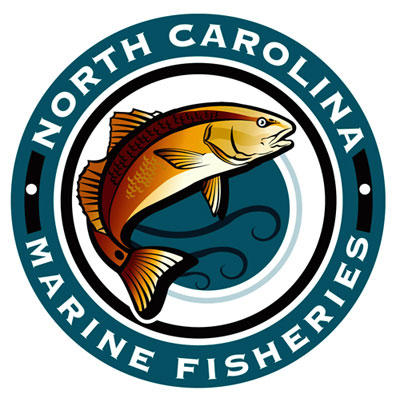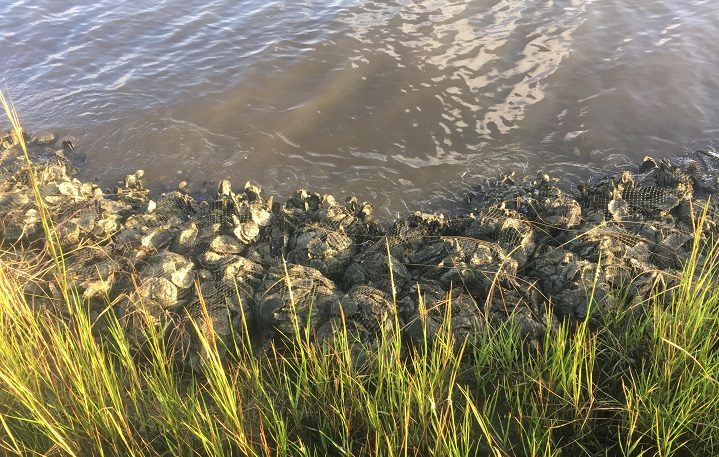
Update March 1 of article originally published Dec. 21: The Coastal Resources Commission approved Feb. 27 during its quarterly meeting the final adoption of temporary rule 15A NCAC 7H .2700 general permit for construction of riprap sills for wetland enhancement in estuarine and public trust waters.
OCEAN ISLE BEACH – The state is well on its way to making it easier for property owners to build living shorelines.
Supporter Spotlight
During the Coastal Resources Commission’s most recent meeting in November in Ocean Isle Beach, the CRC agreed to proceed with temporary rulemaking and approved draft amendments to a general permit for the construction of marsh sills and the related fiscal analysis.
“It’s a way to give folks an alternative to bulkheading that’s more environmentally friendly and will do more to protect the shoreline,” Renee Cahoon, CRC chairperson, said of the erosion-control methods that have been shown to outperform hard, engineered shoreline-stabilization structures during storms and at a lower cost to repair.
A public hearing on the proposed temporary rules is set for 5 p.m. Tuesday, Jan. 8, in the Division of Coastal Management’s Morehead City office. Written comments may be submitted to DCM Director Braxton Davis, 400 Commerce Ave., Morehead City, N.C. 28557. The comment period begins Friday and ends Jan. 17.
After the hearing, Cahoon will decide whether to call a special phone-in session of the CRC to adopt the temporary rules or add the item to the agenda for the next meeting in February, Sarah Young Perkins, public information officer for DCM, told Coastal Review Online. “The CRC started the permanent rulemaking process at the November meeting, but the temporary rules will become effective sooner, and will expire when the permanent rules become effective.”
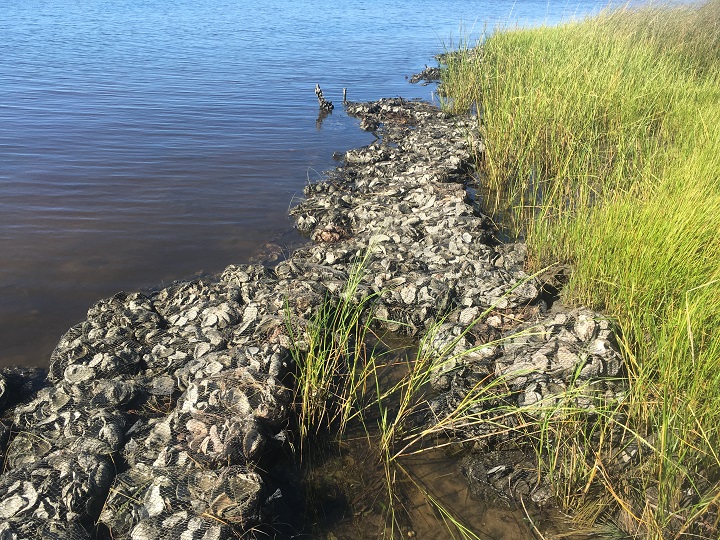
Marsh sills, a type of living shoreline usually built parallel to the shore and typically made of native materials such as plants or oyster shells, are built in conjunction with existing, created or restored wetlands, to stabilize estuarine shorelines, lessen erosion and improve habitats.
Supporter Spotlight
“The Division of Coastal Management and the Coastal Resources Commission have undertaken substantial, long-term efforts to advance marsh sills and other forms of living shorelines as alternatives to traditional bulkheads for estuarine shoreline stabilization in North Carolina, and streamlining the state’s general permit is a significant part of that effort,” Davis told Coastal Review Online.
The amendments to the general permit provide additional material options to build the marsh sills, explain how to measure the width and height of sills and remove coordination requirements among Division of Marine Fisheries, Division of Wildlife Resources and the Army Corps of Engineers, which should cut down on permit processing time.
Additionally, the permit was made to be more consistent with other DCM shoreline stabilization general permits, which don’t require any coordination with other agencies. DCM doesn’t expect there to be any increased cost because of these amendments.
During the CRC’s meeting, Daniel Govoni, policy analyst and federal consistency coordinator for the Division of Coastal Management, presented the fiscal analysis and amendments to 15A NCAC .2700 GP for the construction of marsh sills. “Two important things I would like to point out is that the living shorelines have shown to promote good water quality, ecosystem services and habitat values,” he said. Adding that marsh sills are one of several options that can be used for shoreline erosion control.
Corps Consistency
Govoni during his presentation said that the CRC was directed in October by the General Assembly to adopt temporary rules to revise those covering construction of riprap sills for wetland enhancement in estuarine and public trust waters to be consistent with the Corps’ proposed regional general permit, or RGP.
Govoni explained that in 2016, the Corps created the Nationwide Permit for Living Shorelines to streamline the authorization process.
“We believe this is a step in the right direction nationally, but it didn’t help us here in North Carolina. The reason being is the nationwide permit would require pre-construction notification, which would add additional processing time,” he said.
DCM then began taking steps to simplify the permitting process, starting with creating a stakeholder group with the Corps, the state’s marine science community, the Division of Water Resources, the Division of Marine Fisheries, the North Carolina Coastal Federation, North Carolina Sea Grant and the National Marine Fisheries Service.
At the conclusion of the series of stakeholder meetings, it was agreed that the Corps would explore creating a regional general permit that would not require pre-construction notification, Govoni continued.
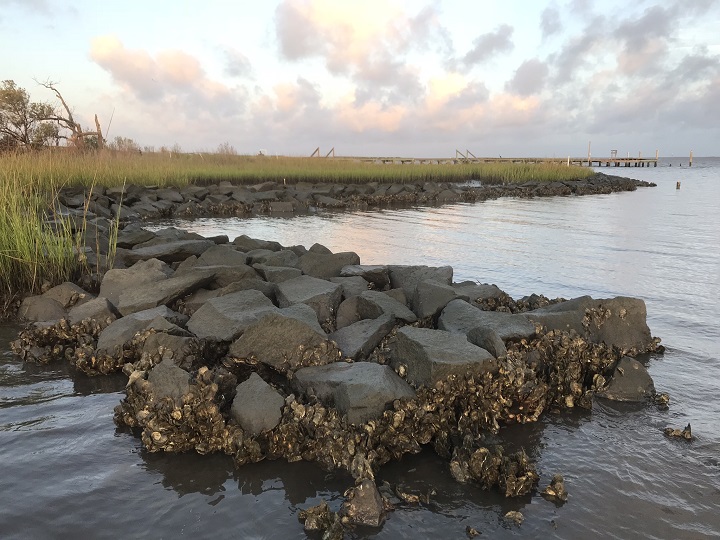
In early September, the Corps issued a public notice proposing to authorize a regional general permit for the construction, maintenance and repair of marsh sills, and on Oct. 22, they submitted a federal consistency determination to DCM for official review. DCM Nov. 7 determined that the proposed RGP is consistent with the state’s approved coastal management program.
Henry Wicker, deputy chief of the Corps’ Wilmington District Regulatory Division, told Coastal Review Online that the Corps’ regional general permit will probably be ready for use by the end of January. He said they’re close to the end of the process and are currently waiting for feedback.
He added that the goal of the RGP, which will be a mirror image of the state general permit, is to expedite the permitting process. If the applicant can adhere to the conditions for the regional general permit, they will also be meeting the conditions for the state.
“We are pleased to see Corps of Engineers moving forward with a general permit and look forward to offering an expedited permitting process once the federal rule is finalized,” Davis said in an interview.
Long Process
House Bill 1028, which directed CRC to adopt temporary and permanent rules to establish a general permit for the construction of “riprap sills,” was approved in 2003, implemented as a temporary rule in 2004 and became permanent on April 1, 2005.
During the development of HB 1028, Govoni explained, the merits of the permit were discussed and some concerns were raised, including the distance off shore sill structures could be built; trading one type of habitat, shallow bottom, for another, marsh protected by riprap; navigational and public trust concerns; the suitability of such structures; and permitting requirements of other agencies.
With the permit, as it was put in place in 2005, there were 29 specific conditions set and coordination with DMF, DWR and the Corps was required. That, Govoni said, “is not consistent with the other general permits, which require no coordination and have a lot less conditions.” He added that staff has been continually looking to help streamline and create a general permit for marsh sills that is equivalent to other general permits.
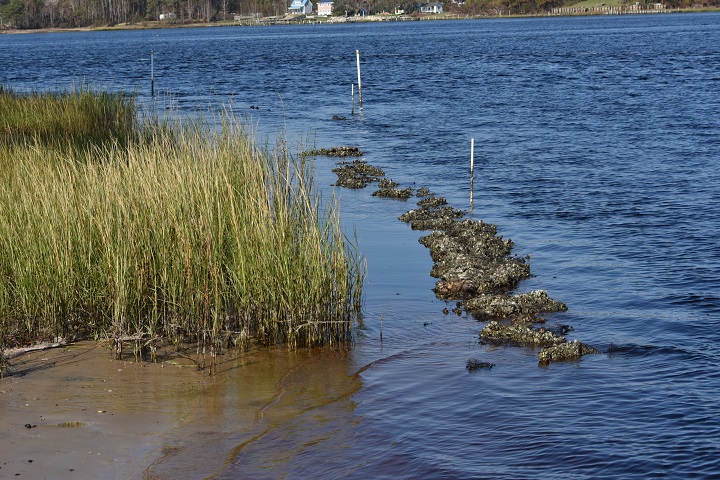
In addition to the amendments removing some redundant and unnecessary conditions, coordination requirements with DMF, DWR and the Corps and backfilling of the sill structure for any wetland planting, amendments also require that sills not be constructed within any habitat that includes oyster reefs or shell banks and that they have a minimum setback of 10 feet from any oysters, oyster beds, shell banks and submerged aquatic vegetation.
In the amendments to the general permit, the term “riprap sills” was replaced with “marsh sills,” which Young Perkins told Coastal Review Online, was a technical change within the rules. “Marsh sills include natural materials other than rocks, such as oyster shells.” Riprap is typically rock or stone.
With temporary rulemaking, Govoni said, the CRC can have a shorter comment period, faster review by Rules Review Commission, or RRC, and no provision for fiscal analysis. The N.C. Administrative Procedure Act allows temporary rulemaking under specific criteria, including when directed by the General Assembly.
Staff was required to submit rule language and a notice of hearing to the Office of Administrative Hearing, or OAH, at least 30 business days before adoption and notify interested parties of the CRC’s intent to adopt the temporary rule, according to Govoni. There will also need to be a public comment period for at least 15 days and a public meeting held no less than five days after the rule and notice have been published.
The RRC will review the temporary rule within 15 days of adoption and the temporary rules will expire 270 days after publication in the North Carolina Register or upon the effective date of a permanent rule.
This general permit does not apply to living shorelines or marsh sills larger than the maximum length of 500 linear feet, he said. “These are for your small-scale, private property owners who want to do this for their shoreline.”
Todd Miller, the Coastal Federation’s executive director, encouraged the commission during the meeting to move forward with approval of the amendments. “We are all going to continue to work on this to make it better in the future, but we also need experience in action of getting as many of these projects on the ground as possible.
“We been demonstrating the successful use of living shorelines for nearly 20 years over miles of shorelines,” Miller said in an interview. “It’s gratifying to finally have uniform federal and state permits that will encourage these projects when they are the best way to protect property and the environment at the same time. It’s a win-win for coastal property owners and our fish and wildlife.”






